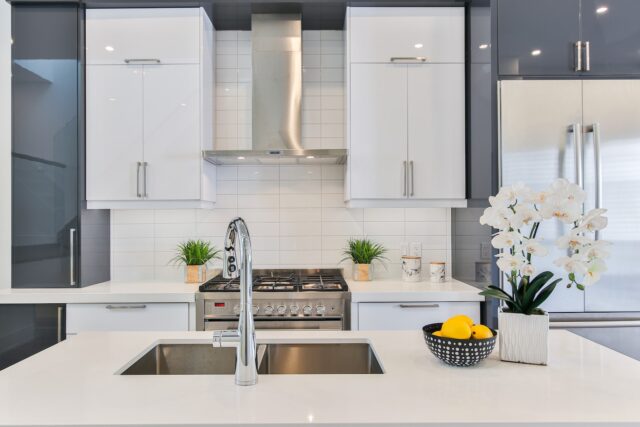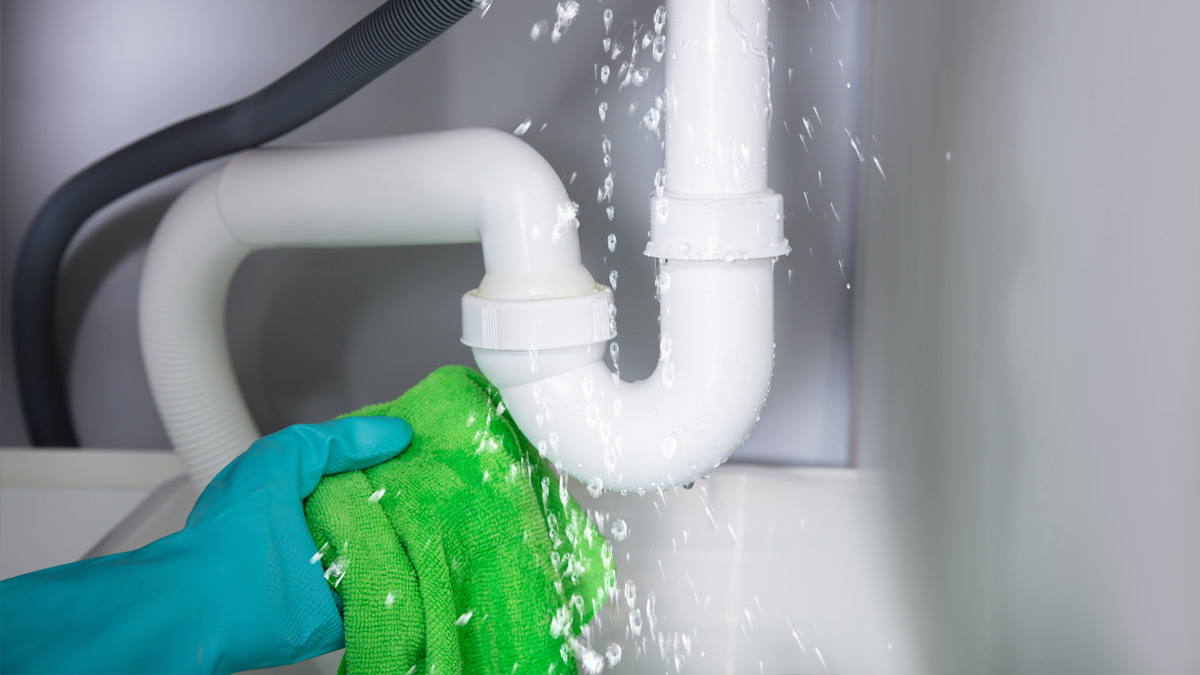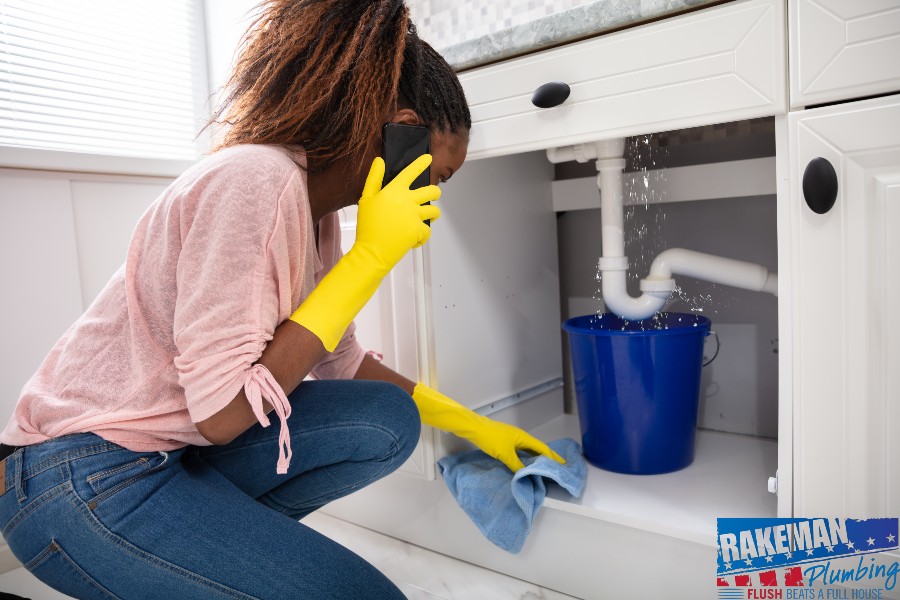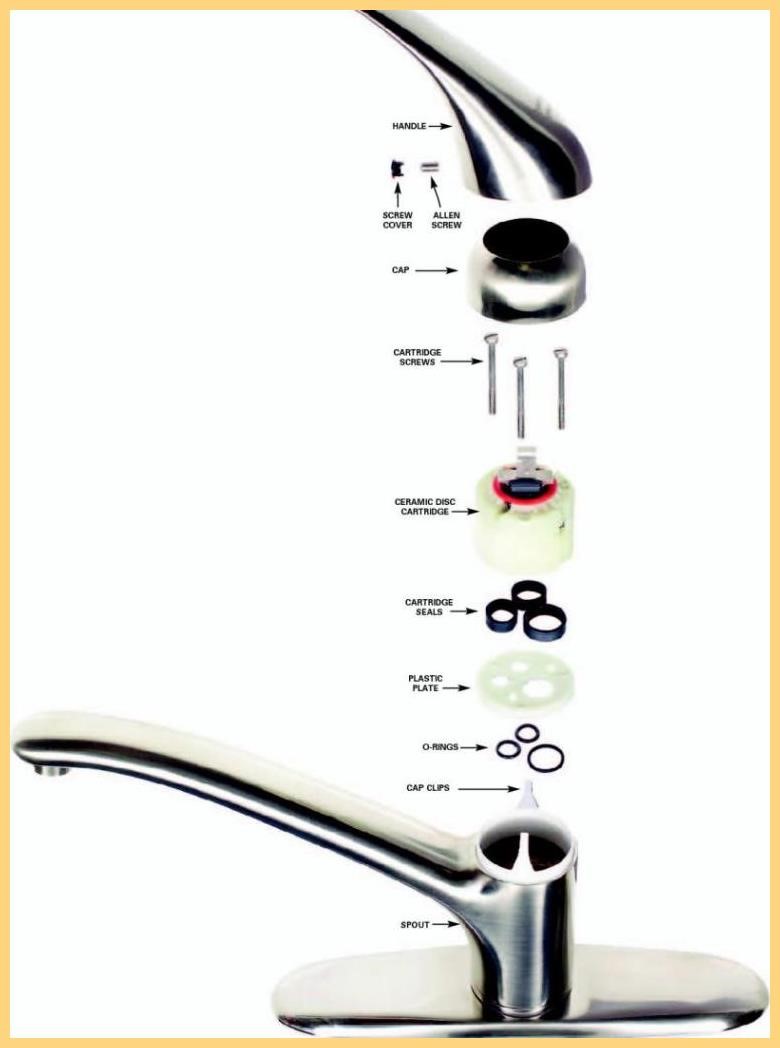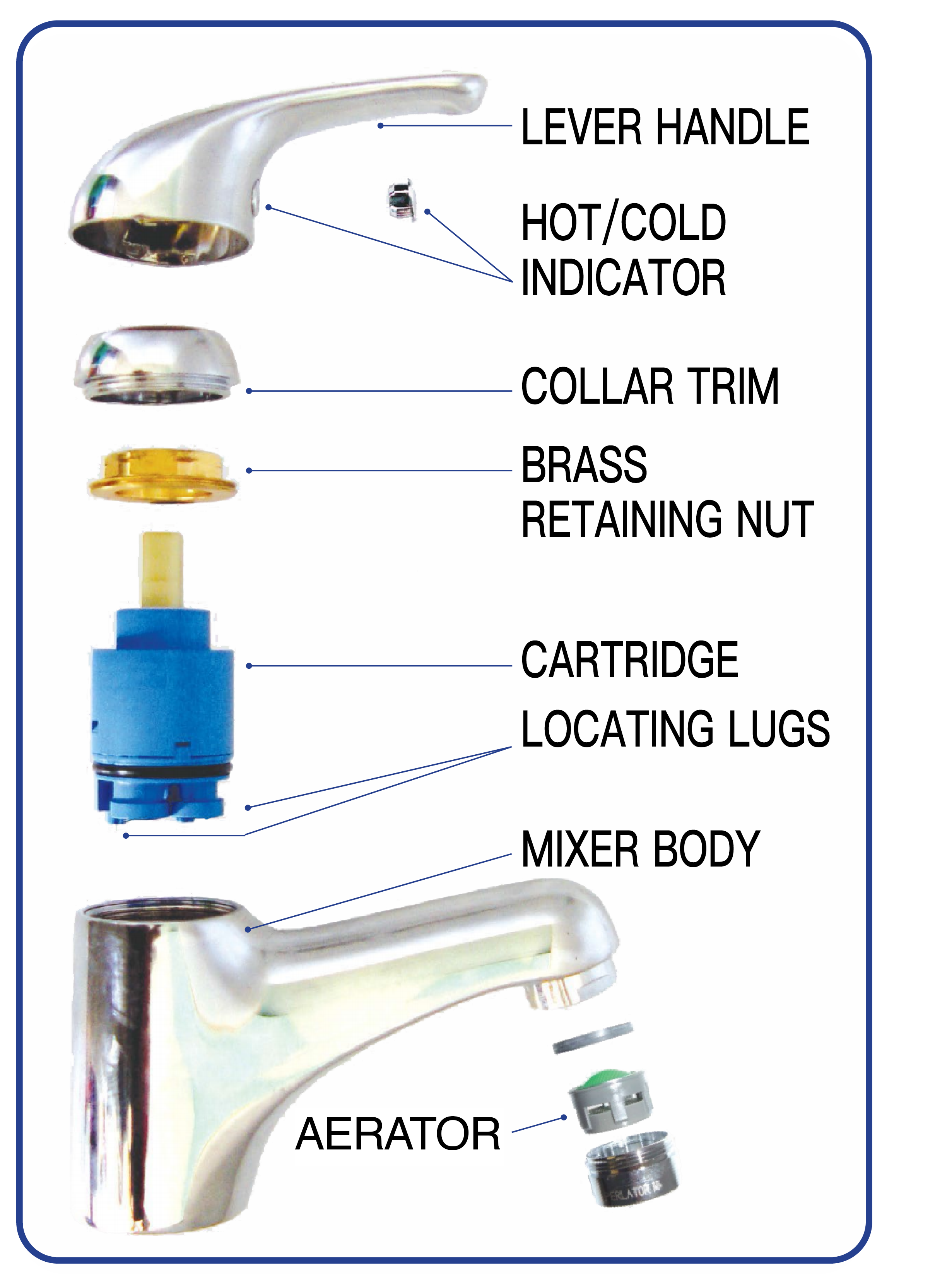A leaking kitchen sink can be a major headache for homeowners. It not only causes a mess but also leads to wasted water and potential damage to your cabinets and flooring. However, fixing a leaky kitchen sink doesn't have to be a daunting task. With the right tools and techniques, you can easily repair the leak and prevent it from happening again in the future. First, start by turning off the water supply to your sink. This can usually be done by turning the shut-off valves located under the sink. If you can't find these valves, you may need to turn off the main water supply to your house. Next, check the source of the leak. It could be a loose connection, a damaged pipe, or a faulty seal. Tighten any loose connections and replace any damaged pipes or seals. If the leak is coming from the faucet, you may need to replace the washers or O-rings. These can be found in most hardware stores and are relatively easy to replace. Once you have fixed the source of the leak, turn the water supply back on and test your sink. Make sure there are no more leaks and that the water is flowing properly.1. How to Fix a Leaky Kitchen Sink
There are several reasons why your kitchen sink may be leaking. The most common causes include: Worn out washers or O-rings: These can cause leaks around the faucet area. Over time, they can become brittle and start to break down, leading to leaks. Loose connections: Water supply lines and drain pipes can become loose and cause leaks. It's important to regularly check and tighten these connections to prevent leaks. Cracked pipes: If your sink is old, the pipes may have become cracked or damaged, causing leaks. In this case, you will need to replace the pipes to fix the problem. Damaged seals: Seals around the sink and faucet can become damaged or worn out, leading to leaks. These can be easily replaced with new seals.2. Common Causes of a Leaking Kitchen Sink
Repairing a leaking kitchen sink is a fairly straightforward process. Here are the steps you need to follow: Step 1: Shut off the water supply: As mentioned earlier, turn off the water supply to your sink before attempting to fix the leak. Step 2: Identify the source of the leak: This could be a loose connection, a damaged pipe, or a faulty seal. Step 3: Tighten any loose connections: Use a wrench or pliers to tighten any loose connections. Step 4: Replace damaged parts: If the source of the leak is a damaged pipe, washer, or seal, replace it with a new one. Step 5: Turn the water supply back on: Turn the water supply back on and test your sink to make sure the leak has been fixed.3. Steps to Repair a Leaking Kitchen Sink
If you suspect that your kitchen sink may be leaking, here are some signs to look out for: Pooling water: If you notice water pooling around your sink or under your cabinets, this is a clear sign of a leak. Mold or mildew: Leaks can cause moisture buildup, which can lead to the growth of mold or mildew. If you notice a musty smell or see black spots around your sink, it's a sign of a leak. Low water pressure: A leak in your sink can affect the water pressure, causing it to be lower than usual. Water stains: Check for any water stains on your cabinets or walls near your sink. This could be a sign of a leak behind the walls.4. Signs of a Leaking Kitchen Sink
Prevention is always better than cure when it comes to leaks. Here are some tips to prevent your kitchen sink from leaking: Regularly check connections: Make it a habit to regularly check and tighten any loose connections under your sink. Be mindful of what you put down the drain: Avoid pouring fats, oils, and grease down your sink as they can clog the pipes and cause leaks. Use a sink strainer: Install a sink strainer to catch any food particles or debris from going down the drain and causing clogs. Replace old parts: If your sink is old, consider replacing the pipes, washers, and seals to prevent leaks from happening in the first place.5. How to Prevent a Kitchen Sink from Leaking
If you're dealing with a minor leak, there are some DIY solutions you can try before calling a plumber: Use plumber's tape: If the leak is coming from a joint or connection, wrapping plumber's tape around it can help create a tight seal. Apply silicone sealant: If the source of the leak is a crack or hole, applying silicone sealant can help seal it and stop the leak. Replace washers and O-rings: As mentioned earlier, worn out washers and O-rings can cause leaks. Replacing them with new ones can solve the problem.6. DIY Solutions for a Leaking Kitchen Sink
If the leak is severe or you're unable to fix it yourself, it's best to call a professional plumber. They have the expertise and tools to accurately diagnose and fix the problem without causing further damage. They can also provide you with tips on how to prevent future leaks.7. Professional Plumbing Services for a Leaking Kitchen Sink
Before attempting to fix a leaky kitchen sink, it's important to first identify the source of the leak. Here's how you can do that: Step 1: Dry the area: Use a towel or cloth to dry the area around your sink. Step 2: Turn on the water: Turn on the water supply and observe where the water is coming from. Step 3: Check the pipes and connections: Look for any signs of leaks around the pipes and connections. Step 4: Inspect the faucet: If the leak is coming from the faucet, take it apart and check the washers and O-rings for any damage.8. How to Identify the Source of a Leaking Kitchen Sink
If you're planning to fix a leaky kitchen sink yourself, here are some tools you'll need: Wrench: This will come in handy for tightening any loose connections. Plumbers tape: Use this to create a tight seal around joints and connections. Silicone sealant: This can be used to seal cracks or holes in pipes or seals. Plunger: A plunger can be useful for clearing clogs that may be causing the leak.9. Common Tools Needed to Fix a Leaking Kitchen Sink
To keep your kitchen sink from leaking, here are some tips to follow: Regularly check and tighten connections: Make it a habit to check and tighten any loose connections under your sink. Don't pour fats, oils, and grease down the drain: These substances can clog your pipes and lead to leaks. Clean your sink regularly: This will help prevent buildup and clogs that can cause leaks. Replace old parts: If your sink is old, consider replacing the pipes, washers, and seals to prevent leaks from occurring. In conclusion, a leaking kitchen sink may seem like a small problem, but if left untreated, it can cause significant damage and cost you a lot of money in repairs. By following these tips and regularly maintaining your sink, you can prevent leaks and ensure your kitchen stays clean and dry. If you do encounter a leak, remember to identify the source, use the right tools, and if needed, seek professional help to fix it properly.10. Tips for Maintaining a Leak-Free Kitchen Sink
How to Prevent Water Leaking from Your Kitchen Sink

A Common Issue in Kitchen Design
 Water leaking from the kitchen sink down to the cabinet is a common issue that many homeowners face. Not only is it a nuisance, but it can also cause damage to your kitchen cabinets and floors if left unaddressed. This problem is often caused by faulty plumbing or poor installation, but it can also be a result of wear and tear over time. Whatever the reason may be, it's important to address it promptly to avoid further damage and potential health hazards. In this article, we will discuss some tips on how to prevent water leaking from your kitchen sink and keep your kitchen design in top shape.
Water leaking from the kitchen sink down to the cabinet is a common issue that many homeowners face. Not only is it a nuisance, but it can also cause damage to your kitchen cabinets and floors if left unaddressed. This problem is often caused by faulty plumbing or poor installation, but it can also be a result of wear and tear over time. Whatever the reason may be, it's important to address it promptly to avoid further damage and potential health hazards. In this article, we will discuss some tips on how to prevent water leaking from your kitchen sink and keep your kitchen design in top shape.
Check for Leaks Regularly
 The first step to preventing water leaking from your kitchen sink is to regularly check for leaks. This means keeping an eye out for any visible signs of water damage or pooling water under the sink. You should also check the faucet, pipes, and connections for any signs of leakage. If you notice any issues, it's important to address them immediately before they worsen.
The first step to preventing water leaking from your kitchen sink is to regularly check for leaks. This means keeping an eye out for any visible signs of water damage or pooling water under the sink. You should also check the faucet, pipes, and connections for any signs of leakage. If you notice any issues, it's important to address them immediately before they worsen.
Properly Seal the Sink and Faucet
 Another common cause of water leaking from the kitchen sink is improper sealing. Over time, the sealant around the sink and faucet can wear out, causing water to seep through and drip down to the cabinet. To prevent this, make sure to properly seal the sink and faucet with a waterproof sealant. This will not only prevent leaks but also keep your kitchen design looking clean and polished.
Another common cause of water leaking from the kitchen sink is improper sealing. Over time, the sealant around the sink and faucet can wear out, causing water to seep through and drip down to the cabinet. To prevent this, make sure to properly seal the sink and faucet with a waterproof sealant. This will not only prevent leaks but also keep your kitchen design looking clean and polished.
Invest in Quality Plumbing and Installation
 When it comes to preventing water leaks, investing in quality plumbing and installation is key. Make sure to hire a reputable and experienced plumber to install your sink and faucet properly. This will not only prevent leaks but also save you from costly repairs in the long run. Additionally, make sure to use high-quality materials for your plumbing to avoid any issues in the future.
When it comes to preventing water leaks, investing in quality plumbing and installation is key. Make sure to hire a reputable and experienced plumber to install your sink and faucet properly. This will not only prevent leaks but also save you from costly repairs in the long run. Additionally, make sure to use high-quality materials for your plumbing to avoid any issues in the future.
Regular Maintenance is Key
In Conclusion
 Water leaking from the kitchen sink down to the cabinet is a common issue that can be easily prevented with proper maintenance and installation. Regularly checking for leaks, properly sealing the sink and faucet, investing in quality plumbing, and regular maintenance are all essential steps in keeping your kitchen design free from water leaks. By following these tips, you can ensure that your kitchen remains a functional and beautiful space for years to come.
Water leaking from the kitchen sink down to the cabinet is a common issue that can be easily prevented with proper maintenance and installation. Regularly checking for leaks, properly sealing the sink and faucet, investing in quality plumbing, and regular maintenance are all essential steps in keeping your kitchen design free from water leaks. By following these tips, you can ensure that your kitchen remains a functional and beautiful space for years to come.















